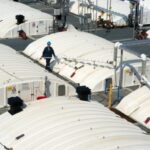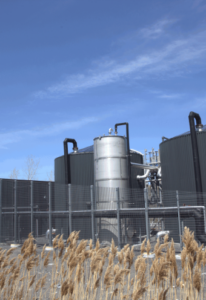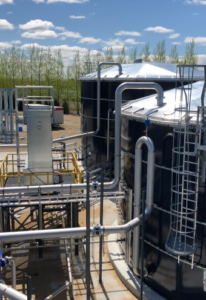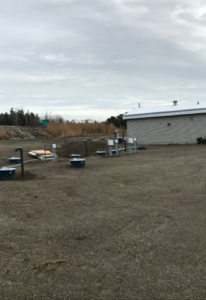Case Study
Maintenance personnel at an agri-food production facility often encounter various obstacles in their role. Their daily responsibilities encompass preventive maintenance on production machinery, addressing breakdowns and emergency repairs, and efficiently planning scheduled tasks. Some maintenance managers also bear the responsibility of wastewater treatment as an added duty.
Operating a water treatment system entails significant expenses, encompassing operational and maintenance costs as well as the procurement of necessary chemicals. Presented below are four effective approaches to substantially diminish your chemical expenditure.
STEP 1: MAKE INFORMED CHOICES REGARDING CHEMICAL SELECTION
When it comes to selecting the appropriate chemicals for effluent treatment, it is advisable to consult a specialized chemical supplier. These suppliers conduct jar tests on your raw water, which is the water entering the wastewater treatment unit. The purpose of these tests is to identify what is the optimal combination of products and their dosage, maximizing the performance of your wastewater treatment system. These selected reagents aid in separating pollutants from the water, allowing for the removal of concentrated pollutants and enabling compliant discharge with existing regulations.
Does your supplier offer a wide range of reagents?
Many water treatment product suppliers do not manufacture chemicals themselves and therefore have limited access to the full range of chemicals available on the market. The representative or technician conducting the tests and ultimately recommending products can only work with the products they have available in their catalogue. While they may find a suitable combination of products and develop a recipe for your wastewater treatment, it raises the question of whether it is the optimal choice.
Does your supplier consider the overall impact of their choice of chemicals?
Evaluating the effectiveness of the recipe alone is not sufficient during treatability tests. It is also essential to assess the associated costs, such as potential pH correction required after using certain reagents and the volume of generated sludge that needs proper disposal.
There are two aspects to the financial impact of selecting chemicals for wastewater treatment: the direct purchase cost of these reagents and the cost associated with the volume of sludge they generate.
STEP 2: GAIN AN OVERVIEW OF CHEMICAL USAGE IN YOUR PLANT
Chemical substances are commonly used in the food industry for three main purposes: sanitary cleaning of production equipment, conditioning of process water, and treatment of effluents. Typically, these reagents are supplied by two different vendors to the plant.
These two suppliers operate independently of each other and have distinct objectives beyond simply selling their products. The supplier of sanitary cleaning products focuses on ensuring equipment and production areas are impeccably cleaned, adhering to sanitary standards. However, they may not consider the impact on wastewater treatment. On the other hand, the supplier of effluent treatment products aims to provide the appropriate recipe to ensure your effluent meets regulatory requirements. It is the supplier’s responsibility to demonstrate the efficacy of the recipe on a laboratory scale. However, they are not accountable for the performance of the water treatment equipment. Essentially, they operate independently of the cleaning product supplier.
Optimizing the cleaning process of production equipment by refining the selection of products used, as well as the volume of dilution and rinsing water required, can result in significant savings on the chemicals used for wastewater treatment.
Therefore, it is advantageous to foster coordination between the supplier of sanitary cleaning products and the supplier of effluent treatment products. Having a comprehensive understanding of water management and the necessary additives can bring about substantial benefits. It’s worth noting that there are a limited number of suppliers who offer both ranges of chemical products, but they are not common.
STEP 3: OPTIMIZE PRODUCT DOSAGES
In order to optimize effective cleaning and disinfection, it is crucial to consistently apply the established recipes and dilutions. Unfortunately, inadequate or poorly calibrated dosing equipment is a common issue. Making use of high-performance and reliable dosing equipment ensures that the optimal amount of product is used consistently. It is important to recognize that optimizing cleaning protocols has direct impacts on wastewater treatment.
When it comes to effluent treatment, achieving optimal dosing can be challenging due to the varying type and quantity of pollutants over time. Implementing a buffer tank can partially address this problem, as it allows for variations in the treatment load to occur over hours rather than minutes. However, real-time adjustment of reagent dosages is necessary to minimize chemical usage and prevent overdosing. Employing equipment that can react in real time to the pollutant load in the raw water can result in significant savings.
It is therefore vital to ensure that the dosage and dilution system for cleaning agents is properly calibrated, just as it is preferable to have dosages proportional to the treatment load in the case of wastewater.
STEP 4: SEEK EXPERT ASSISTANCE
Engaging the services of technical advisors who specialize in chemical reagent usage can be highly beneficial for your plant. These experts will conduct a comprehensive analysis of your sanitary cleaning requirements and characterize your wastewater needs. With a holistic understanding of your operations and specific situation, they can optimize reagent dosages or propose alternative and more effective solutions.
A specialist with a comprehensive overview of your operations can help you save money.
Managing the overall consumption of chemical products, specifically those utilized for sanitary cleaning and effluent treatment, is highly recommended in agri-food production. Apart from potential reductions in reagent usage, you can also anticipate a decrease in the volume of sludge requiring disposal. This optimization process is bound to generate cost savings.







No comment yet, add your voice below!